- Pickleball players warned of alarming rise in eye injuries The Times
- The Fastest Growing Sport in the US Comes With a Sharp Risk to Your Face Gizmodo
- Pickleball Eye Injuries Surge In U.S. U.S. News & World Report
- Pickleball: An ophthalmic…
Blog
-

Pickleball players warned of alarming rise in eye injuries – The Times
-
This incredible tech could make ACs obsolete and finally solve Global Warming forever – Neowin
- This incredible tech could make ACs obsolete and finally solve Global Warming forever Neowin
- Machine learning-assisted thermal analysis of propylene glycol nanofluid with dual flux and bioconvection over a Riga plate Nature
- Machine learning helps…
Continue Reading
-
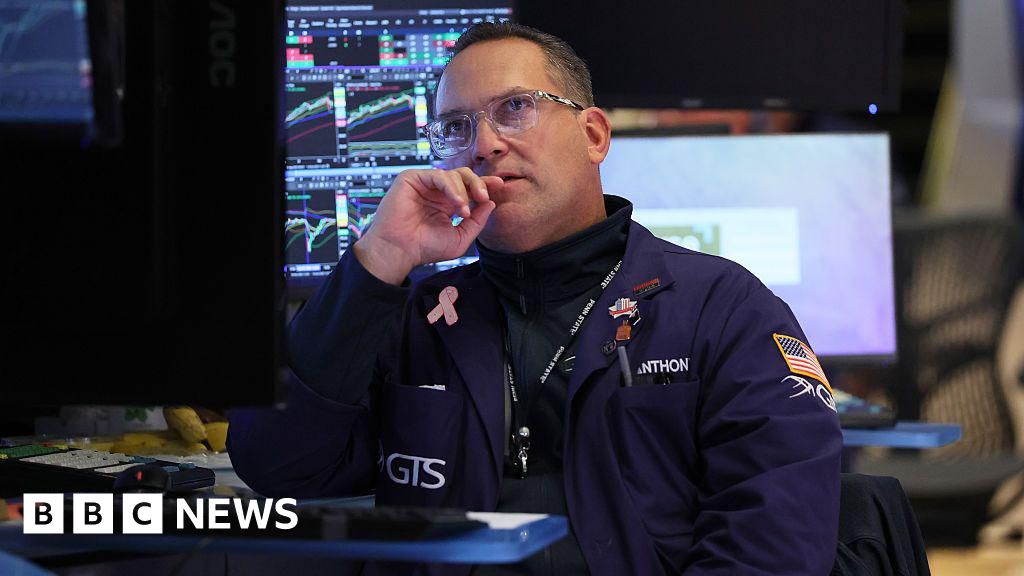
How nervous are investors about the stock market?
Every week it seems US financial markets are hit by another bout of fear.
The latest worries spread this week from the banking sector in the US, after two regional lenders warned they would be hit by losses from alleged fraud.
But before that, markets swooned over signs of rekindled US-China tensions, as the two superpowers face off over tariffs, advanced technology and access to rare earths.
The bankruptcies of car parts supplier First Brands and subprime car lender Tricolor acted as a trigger for nervous chatter in September.
Over the last month, US shares, which had been climbing since their tariff-induced rout in April, have flattened.
But in many ways the market swings so far – down roughly 3% at the steepest – are not unusual.
Zooming out, the major indexes have still posted gains since the start of the year, with the S&P 500 up roughly 13%. That’s smaller than 2024 but still solid.
“The market has done surprisingly well so far this year … driven by an improvement in corporate profits and the enthusiasm surrounding AI,” says Sam Stovall, chief investment strategist at CFRA Research.
The resilience of the stock market is, ironically, exactly what is driving some of the jitters.
Put simply, when set against other standard metrics like profits, share prices in the US are very high.
Meanwhile, concerns about a possible bubble emerging in the artificial intelligence (AI) industry have generated a steady undercurrent of talk since the start of the year – discussions that have ramped up as analysts struggle to see how the vast sums of money the biggest players are throwing at one another all fit together.
The Bank of England warned recently of “stretched valuations” and rising risk of a “sharp market correction”.
Those concerns were echoed in remarks from JP Morgan Chase boss Jamie Dimon and to some extent US central bank chair Jerome Powell.
The International Monetary Fund was the latest to chime in this week.
“Markets appear complacent as the ground shifts,” it said in its financial stability report, which noted risks from trade tensions, geopolitical uncertainty and rising sovereign indebtedness.
James Reilley, senior markets economist at Capital Economics, said the market falls triggered by the regional banks were a sign of investors alert to risk and moving quickly to reduce exposure amid uncertainty about whether the losses were indicative of wider issues.
But he said the brief nature of the drops showed how quickly such worries could clear.
Many investors remain optimistic, with analysts at firms such as Goldman Sachs and Wells Fargo in recent weeks boosting their forecasts for where the S&P 500 might climb by the end of the year.
David Lefkowitz, head of US equities at UBS Global Wealth Management, said he thought a sharp sell-off was unlikely at a time when growth in the US remains solid and the US central bank is lowering borrowing costs.
He is expecting the S&P 500 to end the year hovering around 6,900 points, about 4% higher than where it sits on Friday.
While he acknowledged the troubles popping up at banks, he noted that the lenders involved have alleged fraud.
He said the overall picture, when looking at default levels, appears healthy, and he saw little risk that demand for AI would suddenly decline, puncturing valuations.
“I’m not saying we’re in a bubble. I’m not saying we’re not in a bubble. The question is what’s going to drive the downside,” he said. “Things don’t usually spontaneously decline.”
A typical bull market – when shares are rising – lasts about four and a half years, said Mr Stovall.
With inflation still sticky, and investors wary of events in Washington, like the government shutdown and Trump administration’s efforts to influence the US central bank, this year’s market rally has been “unloved”, said Mr Stovall.
On the other hand, he noted: “It’s just a matter of time. Corrections and bear markets have not been repealed. They might simply be delayed.”
Continue Reading
-
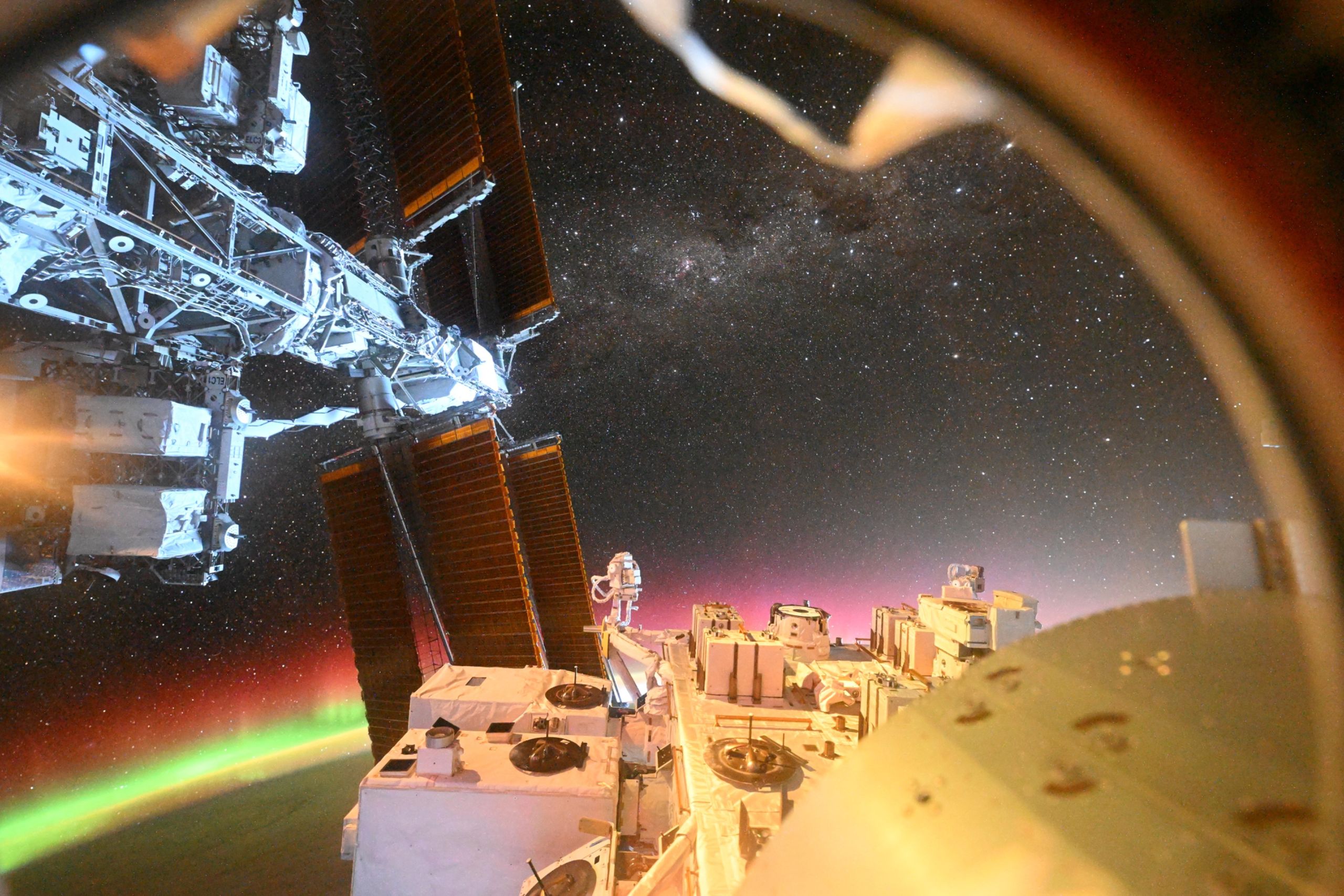
Japanese astronaut snaps stunning aurora photo from orbit | On the International Space Station Oct. 13 – 17, 2025
Science and maintenance work continued this week aboard the International Space Station (ISS), but updates regarding those activities are still all but halted by the U.S. government shutdown. Japanese astronaut Kimiya Yui’s social media posts…
Continue Reading
-
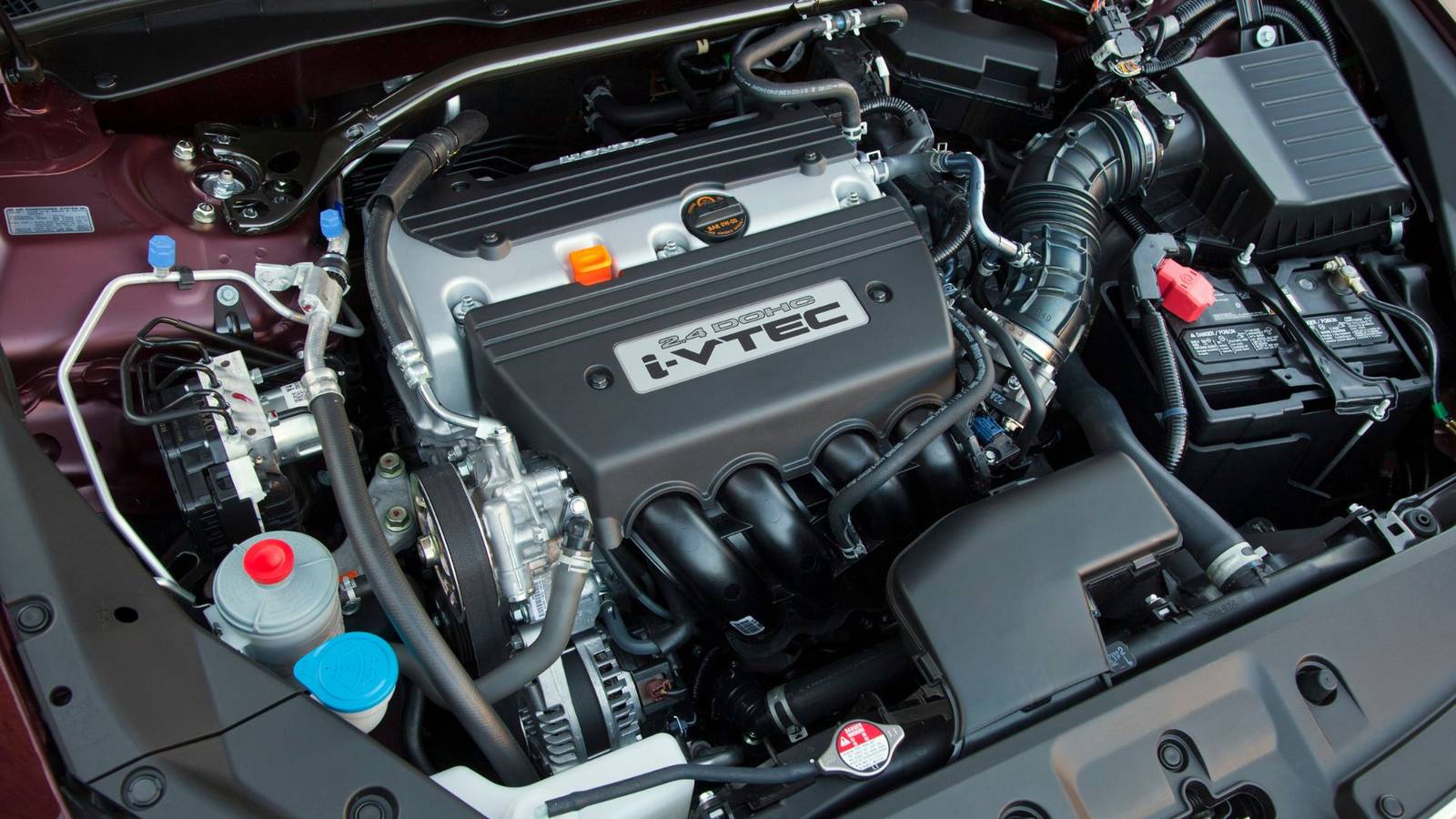
What Makes The K-Series One Of The Best 4-Cylinders Ever?
Japan is the land of iconic engines. This small island across the Pacific has given us infinitely reliable yet tunable motors that can push well beyond their factory figures, or even shrug at the sight of an aftermarket turbocharger….
Continue Reading
-
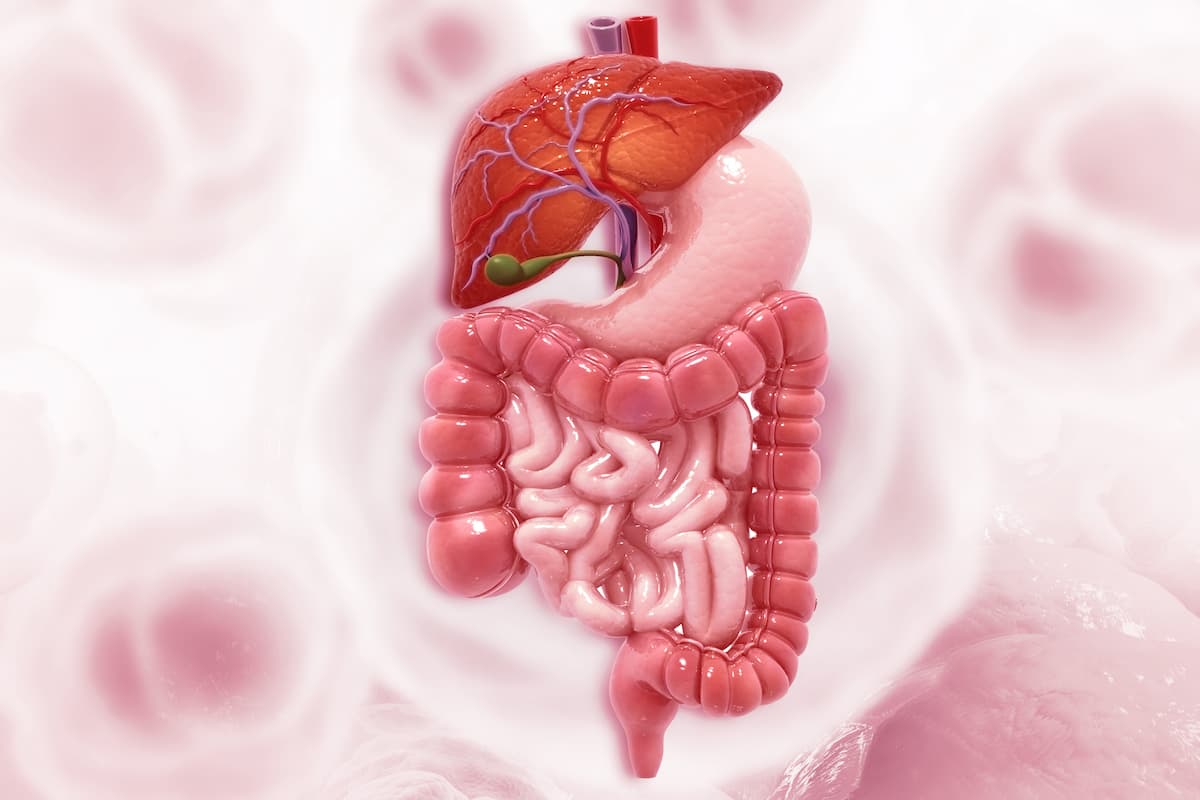
Regorafenib/Nivolumab Exhibits Nonsuperior Survival in Gastric Cancer
Regorafenib (Stivarga) plus nivolumab (Opdivo) displayed noninferior survival and a numerically higher response rate and disease control rate (DCR) compared with chemotherapy for patients with previously treated, refractory, advanced gastric or gastroesophageal junction (GEJ) cancer, according to findings from the phase 3 INTEGRATE IIb (NCT04879368) presented at the
European Society for Medical Oncology (ESMO) Congress 2025 .Among patients in the intent-to-treatment population in the regorafenib arm (n = 309) vs the chemotherapy arm (n = 153), the median overall survival (OS) was 5.9 months vs 6.3 months (HR, 0.88; 95% CI, 0.71-1.09; P = .23). Additionally, the median progression-free survival (PFS) in the respective arms was 1.9 months (95% CI, 1.8-2.0) vs 1.9 months (95% CI, 1.8-2.0; HR, 0.85; 95% CI, 0.69-1.05).
Furthermore, a numerically higher objective response rate (ORR) was observed among patients treated with regorafenib plus nivolumab vs chemotherapy, with respective rates of 7.4% vs 2.6% (OR, 2.99; 95% CI, 1.00-12.11). The DCR in the regorafenib and chemotherapy arms was 39% vs 26% (OR, 1.84; 95% CI, 1.18-2.90), with 12-month DCR rates of 14% (95% CI, 8.5%-21%) vs 0% (95% CI, not estimable [NE]), respectively.
Global quality of life (QOL) was numerically improved with regorafenib, with 12-month deterioration-free rates of 3.9% (95% CI, 2.1%-6.5%) vs 0.7% (95% CI, <0.1%-3.5%) with chemotherapy (HR, 0.74; 95% CI, 0.60-0.91). Additionally, the physical functioning QOL scores exhibited similar values, with event-free rates of 3.9% (95% CI, 2.1%-6.5%) and 0.7% (95% CI, <0.1%-3.5%), respectively (HR, 0.86; 95% CI, 0.70-1.05).
“[Regorafenib plus nivolumab] was not superior to investigator’s choice of chemotherapy in third- or later-line treatment,” presenting investigator, David Goldstein, MBBS, FRACP, PRCP, conjoint clinical professor and senior staff specialist in the Department of Medical Oncology at Prince of Wales Hospital in Syndey, Australia, stated in the presentation. “We note that secondary end points of ORR and DCR were numerically higher in the [experimental] arm, without any adverse impact on global QOL and a prolonged 12-month time to deterioration in the regorafenib/nivolumab arm.”
In the phase 3 AGITG intergroup study, patients with unresectable locally advanced, metastatic, or recurrent gastric or GEJ adenocarcinoma who previously received at least 2 prior lines of chemotherapy—including a platinum-containing agent and fluoropyrimidine —were randomly assigned 2:1 to receive the regorafenib/nivolumab regimen or chemotherapy. Those eligible for enrollment also must have had an ECOG performance status of 0 or 1, and those with HER2-positive disease must have received trastuzumab (Herceptin).
Treatment in the investigational arm consisted of 90 mg of daily oral regorafenib on days 1 to 21 of each 28-day cycle and intravenous nivolumab at 240 mg on day 1 of each 14-day cycle for 2 months of treatment, followed by 480 mg of intravenous nivolumab on day 1 of 28-day cycles. The chemotherapy regimen used was determined by the investigator’s choice and consisted of taxane-based chemotherapy (25%), irinotecan (25%), or trifluridine/tipiracil (Lonsurf; 49%). In both arms, treatment continued in the absence of disease progression or unacceptable toxicity.
In the investigational and control arms, 48% in each arm were treated in Asia, 73% vs 75% were male, and the median age was 63 years (range, 22-85) vs 63 years (range, 24-83). Most patients were previously treated with VEGF inhibitors (61% vs 59%), had an ECOG performance status of 1 (57% vs 55%), and had gastric disease (63% vs 59%). A total of 33% vs 33% received prior immunotherapy, 44% vs 44% received more than 2 prior lines of therapy, and 50% vs 48% had more than 2 metastatic sites of disease.
The primary end point of the study was OS. Secondary end points included PFS, ORR, DCR, QOL, and safety.
Any-grade adverse effects (AEs) were observed in 98% of the regorafenib/nivolumab arm vs 92% of the chemotherapy arm; 58% vs 38%, 8% vs 10%, and 4% vs 1% experienced grade 3, 4, and 5 AEs, respectively. The frequency of serious AEs (SAEs) in either arm was 41% vs 25%. However, Goldstein noted that an expedited reporting for SAEs was not required in the chemotherapy arm, and an imbalance in the reporting of these events was expected.
The most common grade 3 or higher AEs in the investigational and control arms included neutrophil count decreases (3% vs 18%), anemia (6% vs 9%), fatigue (6% vs 4%), nausea (1% vs 7%), aspartate aminotransferase increases (5% vs 3%), and platelet count decreases (6% vs 2%).
Reference
Goldstein D, Sjoquist K, Espinosa D, et al. Regorafenib plus nivolumab vs investigator’s choice of chemotherapy in previously treated gastric or gastroesophageal cancer: INTEGRATE IIb, a randomized phase 3 AGITG Intergroup [NHMRC-CTC/IKF/AIO, ACCRU, TCOG/NHRI] study. Presented at the European Society for Medical Oncology (ESMO) Congress 2025; October 17-21, 2025; Berlin, Germany. Abstract LBA80.
Continue Reading
-
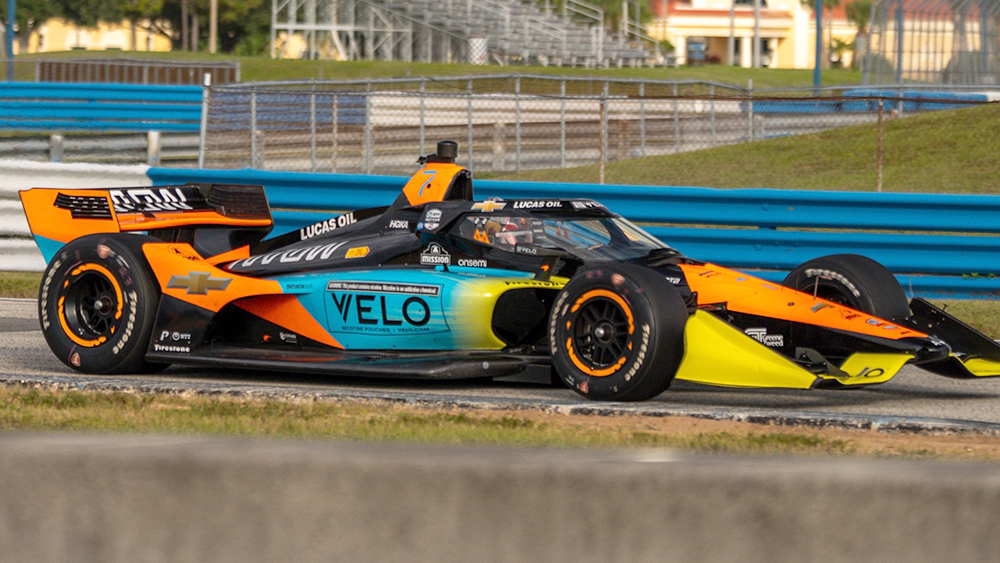
Enzo Fittipaldi Happy To Help Arrow McLaren Dial In at Test
Enzo Fittipaldi strapped into NTT INDYCAR SERIES machinery for just the third time in his career Wednesday, Oct. 14.
He completed a full day of testing in the No. 7 Arrow McLaren Chevrolet during a private session at Sebring…
Continue Reading
-
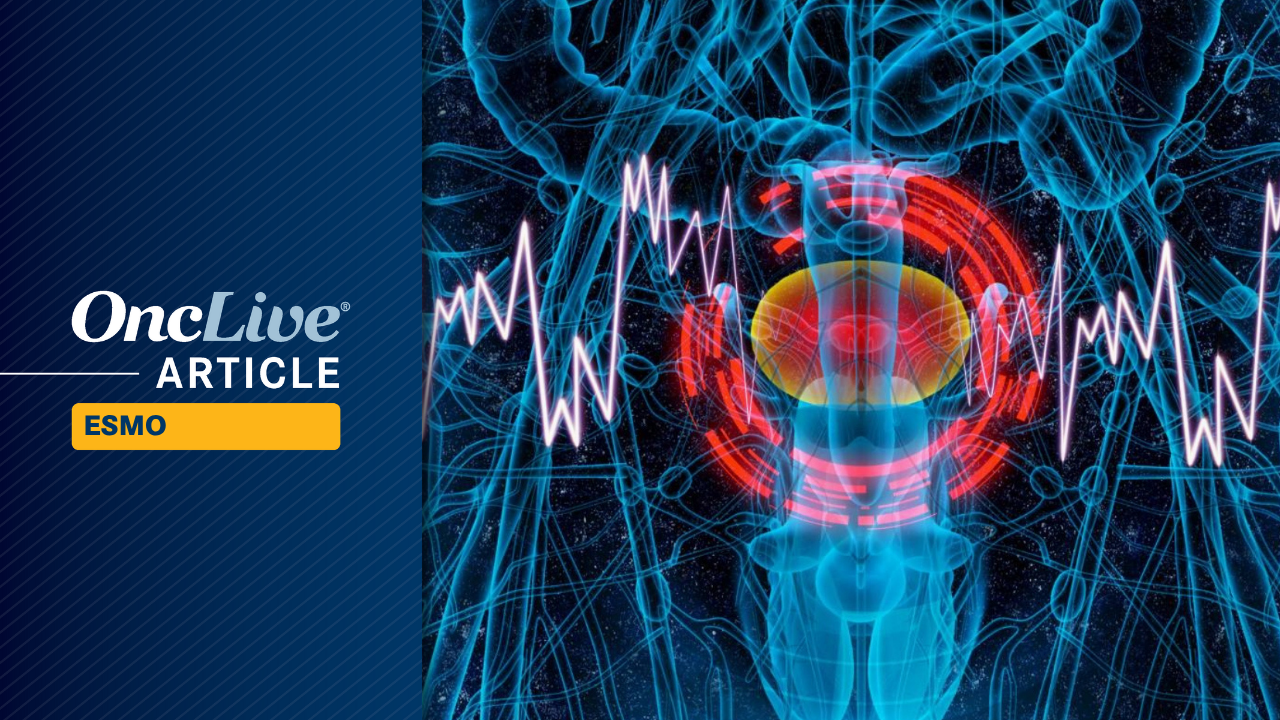
SunRISe-4 Data Support Role for Neoadjuvant Gemcitabine Intravesical System Plus Cetrelimab in MIBC
Neoadjuvant treatment with gemcitabine intravesical system (TAR-200; Inlexzo) plus cetrelimab led to a high pathologic complete response (pCR) rate and recurrence-free survival (RFS) rates in patients with muscle-invasive bladder cancer (MIBC), according to data from the primary analysis of the phase 2 SunRISe-4 study (NCT04919512).1
The findings, which were shared during the
2025 ESMO Congress , showed that TAR-200 plus cetrelimab (cohort 1; n = 88) experienced a pCR of 38% (95% CI, 28%-49%); this rate was 28% (95% CI, 16%-44%) with cetrelimab monotherapy (cohort 2; n = 46). Pathologic overall response (pOR) rates in the respective cohorts were 53% (95% CI, 43%-64%) and 44% (95% CI, 29%-59%). With regard to RFS, the 12-month RFS rate with TAR-200 plus cetrelimab was 77% (95% CI, 67%-85%); this rate was 64% (95% CI, 47%-77%) with cetrelimab alone.“At the primary analysis of SunRISe-4, neoadjuvant gemcitabine intravesical system plus cetrelimab showed a high pCR rate and 12-month RFS rate, supporting further investigation of the combination in MIBC,” Andrea Necchi, MD, said in a presentation of the data. “Exploratory urinary tumor DNA [utDNA]/circulating tumor DNA [ctDNA] minimal residual disease [MRD] results support further investigation as predictive biomarkers for residual disease after neoadjuvant therapy in MIBC.”
Necchi is an associate professor at Vita-Salute Raffaele University and the head of genitourinary medical oncology at IRCCS San Raffaele Hospital and Scientific Institute in Italy.
What Is the Unmet Need for Patients With MIBC Who Do Not Receive Cisplatin-Based Chemotherapy?
For patients with MIBC, standard treatment is radical cystectomy with neoadjuvant cisplatin-based chemotherapy or chemoradiation in select cases; however, up to half of patients are not candidates to receive cisplatin or they refuse to receive it. These patients receive standard-of-care immediate radical cystectomy. In those who are undergoing radical cystectomy, it is known that pathologic stage represents a prognostic factor for survival.
Necchi reported that with radical cystectomy alone, patients will achieve pCRs ranging from 10% to 15%; with neoadjuvant cisplatin-based chemotherapy, these rates range from 26% to 42%. Those who receive checkpoint inhibition in the neoadjuvant setting experience pCRs ranging from 31% to 37%. Patients who received neoadjuvant chemotherapy and experienced pCR experience lower risk of death and risk of recurrence than those who have residual disease. As such, “there is a need for effective and more tolerable treatment options for patients with MIBC who are candidates for radical cystectomy but neoadjuvant cisplatin-based chemotherapy,” he underscored.
What Is the Design of the SunRISe-4 Study?
The multicenter, open-label, parallel cohort, phase 2 study enrolled patients with histologically confirmed cT2 to T4a N0M0 MIBC who had predominant urothelial carcinoma histology. They were at least 18 years of age, had an ECOG performance status of 0 or 1, were not eligible or were refusing cisplatin-based chemotherapy, and were scheduled to undergo radical cystectomy.
Patients were randomized 5:3 to cohort 1 (n = 101) or cohort 2 (n = 58). Those in cohort 1 received TAR-200, so 225 mg of gemcitabine every 3 weeks (Q3W) indwelling for 12 weeks plus cetrelimab at 360 mg Q3W for 12 weeks. Those in cohort 2 received 360 mg of cetrelimab Q3W for 12 weeks. After 4 cycles of treatment, patients underwent radical cystectomy at week 12. They then entered into follow-up.
Stratification factors included visible residual disease at transurethral resection of bladder tumor (complete vs incomplete) and tumor stage at time of MIBC diagnosis (cT2 vs CT3 to 4a). The primary end point of the study was pCR rate (ypT0N0), and secondary end points included RFS and safety. Exploratory end points comprise pOR (≤ypT1N0), overall survival, time to symptomatic progression, quality of life, pharmacokinetics, and biomarker analysis.
During the ESMO Congress, Necchi shared findings from the primary analysis of the study, as well as data from exploratory biomarker analyses of utDNA and ctDNA MRD. He noted that “side-by-side descriptive summary of efficacy was conducted, and no statistical hypotheses were tested to compare cohorts.”
What Were the Characteristics of the Patients Enrolled to SunRISe-4?
The median patient age in cohort 1 was 74 years (IQR, 69-77) and 69 years (IQR, 64-74) in cohort 2. Most patients were male (85.1%; 79.3%), White (71.3%; 74.1%), from Western Europe (40.6%; 43.1%), former nicotine users (50.5%; 58.6%), had an ECOG performance status of 0 (82.2%; 77.6%), and stage T2 disease at initial diagnosis (78.2%; 84.5%).
Additionally, 11.9% of those in cohort 1 and 15.5% of those in cohort 2 previously received intravesical therapy; 18.8% and 13.8% of patients had residual disease. In cohort 1, 50.8% of patients had a low PD-L1 status and 49.2% had high PD-L1 status; in cohort 2, these rates were 74.2% and 25.8%. Moreover, 21.8% of those in cohort 1 and 27.6% of those in cohort 2 had urothelial carcinoma with variant histology. In cohort 1, 45.5% of patients were ineligible for neoadjuvant cisplatin-based chemotherapy and 54.5% refused; in cohort 2, these respective rates were 37.9% and 62.1%.
What Additional Data Were Shared During the Meeting?
At baseline, 81.8% of patients with visibly complete transurethral resection of a bladder tumor (TURBT) were utDNA MRD positive; 83.3% of those with visibly incomplete TURBT were utDNA MRD positive at baseline.
The proportion of patients who were utDNA MRD-positive was reduced after 12 weeks of neoadjuvant treatment, irrespective of treatment. Specifically, in cohort 1, 77.8% of patients were utDNA MRD-positive at baseline, and this percentage dropped to 50.0% at week 12; in cohort 2, 90.9% of patients had utDNA positivity at baseline, and this rate dropped to 55.6% at week 12. No meaningful differences were noted between the cohorts, according to Necchi, who added that sample sizes were limited.
utDNA MRD-negative status at week 12 and utDNA clearance from baseline to week 12 were both linked with pCR. Specifically, 81.5% of patients who achieved pCR (n = 22/27) were utDNA MRD negative at week 12 vs 21.2% of those who did not achieve pCR (n = 7/33; Fisher’s test, P = 5.4 x 10-6). Eighty percent of those with utDNA MRD positivity at baseline and who achieved pCR (n = 12/15) had utDNA clearance at week 12 vs 13.3% of those who did not experience pCR (n = 2/15; Fisher’s test, P = .0006).
Moreover, ctDNA MRD negativity status at baseline and week 12 was associated with longer RFS. The hazard ratio (HR) for RFS by baseline ctDNA MRD status (n = 44) was 4.42 (95% CI, 0.91-21.3; log-rank P = .04). The HR for RFS by week 12 ctDNA MRD status (n = 44) was 4.66 (95% CI, 1.24-17.4; log-rank P = .01). Necchi clarified that week 12 ctDNA MRD status and ctDNA clearance at week 12 were not significantly linked with pCR (P = .12; P = .15).
In an exclusive interview with OncLive®,2 Necchi walked through the
significance of the SunRISe-4 data : “What is meaningful in this analysis is the role of MRD assessment by lipid biopsies,” he said. “There is clearly a double contribution of the 2 components: utDNA toward pCR and ctDNA toward prolonged survival [with gemcitabine intravesical system].”Continue Reading
-

Sudden cardiac death associated with chronic kidney disease, study finds
(Photo: Science Photo Library/Getty Images) …Continue Reading
-

Google’s Gemini 3.0 reportedly due to be released in December – Sherwood News
- Google’s Gemini 3.0 reportedly due to be released in December Sherwood News
- Sundar Pichai: “Gemini 3.0 will release this year” Techzine Global
- Google AI Studio Rolls Out Rate Limit Dashboard as Gemini 3.0 Remains in Development The Tradable
Continue Reading